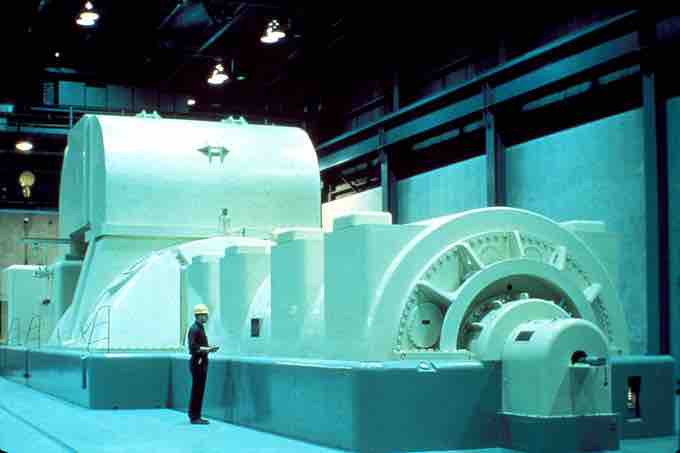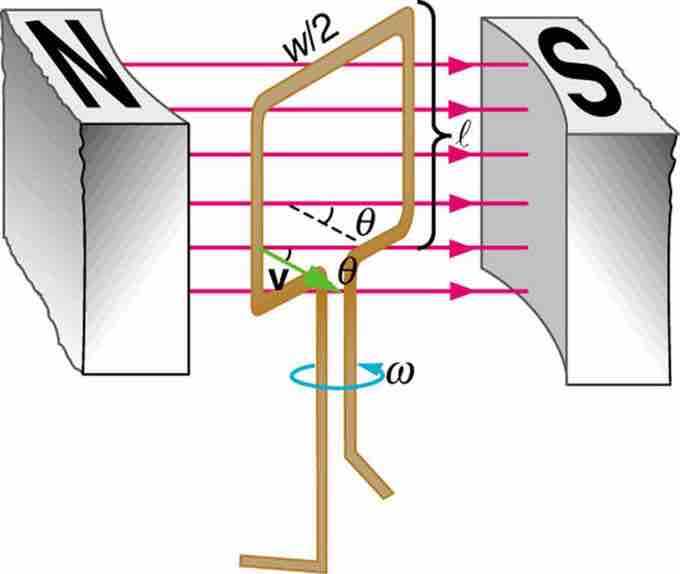Electric generators are devices that convert mechanical energy to electrical energy. They induce an electromotive force (EMF) by rotating a coil in a magnetic field. It is a device that converts mechanical energy to electrical energy. A generator forces electric charge (usually carried by electrons) to flow through an external electrical circuit. Possible sources of mechanical energy include: a reciprocating or turbine steam engine , water falling through a turbine or waterwheel, an internal combustion engine, a wind turbine, a hand crank, compressed air, or any other source of mechanical energy. Generators supply almost all of the power for the electric power grids which provide most of the world's electric power.

Steam Turbine Generator
A modern steam turbine generator.
Basic Setup
Consider the setup shown in . Charges in the wires of the loop experience the magnetic force because they are moving in a magnetic field. Charges in the vertical wires experience forces parallel to the wire, causing currents. However, those in the top and bottom segments feel a force perpendicular to the wire; this force does not cause a current. We can thus find the induced EMF by considering only the side wires. Motional EMF is given to be EMF=Bℓv, where the velocity v is perpendicular to the magnetic field B (see our Atom on "Motional EMF"). Here, the velocity is at an angle θ with B, so that its component perpendicular to B is vsinθ.

Diagram of an Electric Generator
A generator with a single rectangular coil rotated at constant angular velocity in a uniform magnetic field produces an emf that varies sinusoidally in time. Note the generator is similar to a motor, except the shaft is rotated to produce a current rather than the other way around.
Thus in this case the EMF induced on each side is EMF=Bℓvsinθ, and they are in the same direction. The total EMF
This expression is valid, but it does not give EMF as a function of time. To find the time dependence of EMF, we assume the coil rotates at a constant angular velocity ω. The angle θ is related to angular velocity by θ=ωt, so that:
Now, linear velocity v is related to angular velocity by v=rω. Here r=w/2, so that v=(w/2)ω, and:
Noting that the area of the loop is A=ℓw, and allowing for N loops, we find that:
Generators illustrated in this Atom look very much like the motors illustrated previously. This is not coincidental. In fact, a motor becomes a generator when its shaft rotates.